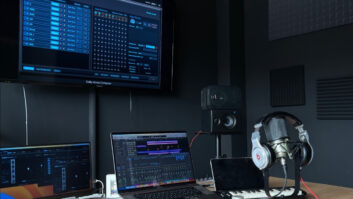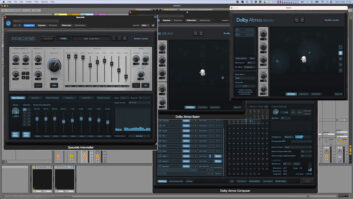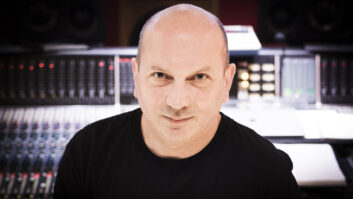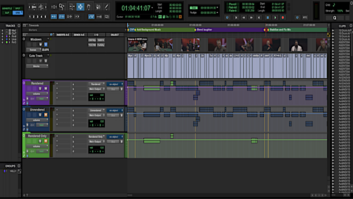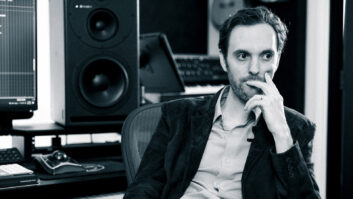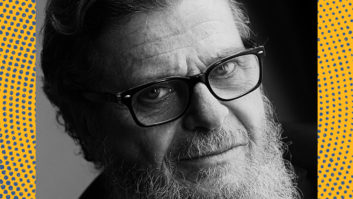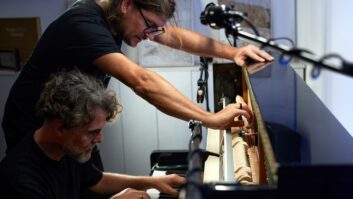
As essential as music is to any viewing experience, be it features, series, documentaries or video games, too much or too little of it can be distracting. In the case of action sports films, every moment of the visual has score attached to it. With next to no dialog, the music is the narrative. The person who, arguably, knows this best is Piers Baron, who since his 2013 score for Nike Snowboarding Never Not Part 2, has become the go-to composer for action sports films.
Baron’s scores fit seamlessly with both the minimal dialog and the emotive sounds of skateboarding, snowboarding, mountain biking and the like. Among his highlights are Jetman Dubai: White Feathers, an 11-minute heart-soaring experience from the point of view of two jetmen; The Flat Earth from award-winning director and cinematographer Ty Evans, renowned for his stellar work in skateboarding films; and David Blaine Live, for which Baron wrote the music for the respected magician’s live show, composing on headphones while watching Blaine’s rehearsals.
“It is a lot,” says Baron of the amount of music he is expected to compose for any of his commissions. “But it also gives you creative freedom to get away from the pop structure. What connected with me musically at a young age was early Metallica. It’s song-based, but it’s experimental in chord structuring. That lends itself to constantly evolving and changing while having a theme running through it. I like the idea of parts of the score referencing themselves throughout the film. I find it really ties things together for the viewer.”
This lines up with the nature of the films Baron scores. On a number of occasions, his own music is what’s been temped to picture, which makes things a little easier. Other times, such as on his latest work, Teton Gravity Research’s seven-minute mountain biking film, Accomplice, he is given the edit with nothing but the sounds of the bicycles. For this he creates a fluid piece that fits within the film’s movements rather than music over the top.
“I start making click tracks in Ableton,” says Baron, whose Los Angeles-based home studio centers around a MacBook Pro and Yamaha NS10 speakers (“for when I don’t have time to be second-guessing my mix”), plus the “super-responsive” Hedd Type 20 speakers for contrast.
“I do multiple tempo click tracks across the film so I can work out the pacing,” he continues, noting that in action sports films the picture is typically final when it comes to him. “I automate the click to give me a tempo for mapping. Or, I’ll go to the crescendo end and play chords on the Korg D1 piano, then back to the start and work out how minimal that needs to be, then to the middle with synth noises or quirky sounds to figure out the flow.”
At this point, Baron removes himself from the studio and develops the idea in his head, making notes on his phone. He does this for a day at a time, giving himself time away from the computer screen, which is not a creative place for him. Says Baron, “It’s important for each project to have its own sound palette. If I have enough time, like on Accomplice, I spend a week making synth patches. I get different-sounding plug-ins for different parts, really experiment and make weird sounds. Even if you only come up with five sounds, you could splice those and use them a few times.”
Baron started in music with guitar, self-trained at a young age. He shifted to producing drum ‘n’ bass as a teenager, gaining respect and traction in that space. Both served as solid training ground, as all of the sounds heard on Baron’s scores, including the vocals, are made by him. Besides the Korg D1, he relies on Imaginado’s multiple-oscillator DRC synth, and for more complicated sounds, Serum. He has SUBPAC plus Soundtoys and iZotope products on hand, as well as Ableton’s built-in plug-ins. But he will also use Metric Halo ChannelStrip, which includes a distressor, limiter, EQ and gate, as well as Paul’s Extreme Sound Stretch.
“You can put any sound in PaulStretch and time stretch it to infinity,” Baron says. “Some of the weirder sounds in my soundtracks that I have in my head, I’ll make on the microphone and put it into PaulStretch. I stretch it backward and forward, add reverbs and delays and pitch it up and down and turn it into something that doesn’t sound like any other instrument.”
While Baron is given a lot of leeway to incorporate his aural vision into the film, what works best is when there is collaboration with the filmmaker. “For each genre of action sports, there are internal, audience-specific factors that you have to be really clued up about,” he says. “Accomplice, for instance, for two minutes we added very minor sound effects against [cyclist] Graham Agassiz riding through the woods with no music at all. When I first heard that idea, I said, ‘Two minutes, that’s quite a long time.’ Once it all came together, it made the ending huge. It wouldn’t have had the same impact if we hadn’t had the silence. That was definitely something I was skeptical about. The director said, ‘Trust me, this is going to work.’ And it did.”

